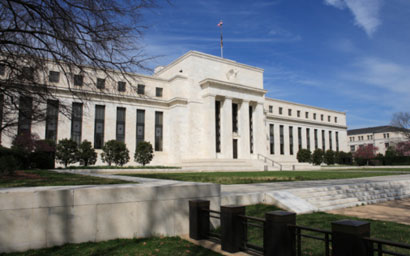The US Federal Reserve’s first rate hike since 2006 has been broadly welcomed and described as good for long-term investors and savers.
The Fed increased rates, which had been frozen at 0.25% since November 2008, by 25 basis points yesterday.
Joseph Davis, Vanguard global chief economist, says the hike is an “unequivocal positive” for both long-term investors and savers, and those who claim raising rates is a mistake underappreciate the still-accommodative stance of monetary policy and resilience of the US economy.
For most, the question now is where rates will go next – and when, though there is a broad consensus that rates will continue to rise slowly.
Stephanie Sutton, US equities investment director at Fidelity International, notes any acceleration in the pace of rate rises could create uncertainty and volatility.
“We expect a dovish tightening cycle that will likely leave the Fed rate below the rate of trend inflation for at least a year,” says Davis.
Stephanie Flanders, chief market strategist for Europe at JP Morgan Asset Management (JPMAM), says the Fed will be cautious moving forward.
“The world cannot afford to have the Fed join the long list of central banks that have raised interest rates since the global financial crisis, then later been forced into reverse,” she says.
But Ian Kernohan, economist at Royal London Asset Management, believes the market often underestimates the pace of tightening in a rate cycle.
“While we agree that the Fed will not want to frighten the horses and will stick to a gradual path initially, unemployment has been falling rapidly, core inflation has been stubborn in the face of the collapse in oil prices, while there are good signs wage pressures are building,” he says.
“If labour market data remains robust through the rest of the winter, combined with a further rise in headline inflation, the market may have to revisit its benign view about the likely path of US interest rates.”
Neil Williams, Hermes’ group chief economist, expects the Fed will study the impact of the rise on regions, particularly China, and on assets before deciding to raise rates further.
Flanders, at JPMAM, states many factors will determine the pace and direction of US monetary policy, notably the strength of US consumption and investment, and whether there’s another wave of downward pressure on world goods prices.
“Arguably, the best single indicator of how this process is going will be what happens to the dollar,” she says.
“US currency usually strengthens in the lead-up to higher interest rates. Some further dollar strength would be manageable, but another leap upwards could be very damaging, not just for the balance of the US recovery but for broader global economic stability. Foreign exchange moves are notoriously hard to predict, and do not reliably follow economic fundamentals nor always follow the cues of central banks.”
However, no matter the pace of increases, peak rates are predicted to be significantly lower than the historic average of 5%.
“I expect peak rates of 3.75% at a maximum, and that lies some years down the line,” Williams says.
Finally, the Fed’s decision will, many feel, serve to intensify debate over whether the Bank of England (BoE) should also begin raising rates.
Kevin O’Nolan, portfolio manager at Fidelity Solutions, notes while unemployment and inflation are at broadly similar levels in the UK and the US, the BoE has indicated it would like to see evidence of consistent wage growth before raising interest rates.
“Wednesday’s earnings data confirms the slight softening we have seen in recent months and with the ‘Brexit’ vote to come later this year the Bank is unlikely to act in the immediate future,” he says.
©2015 funds europe





